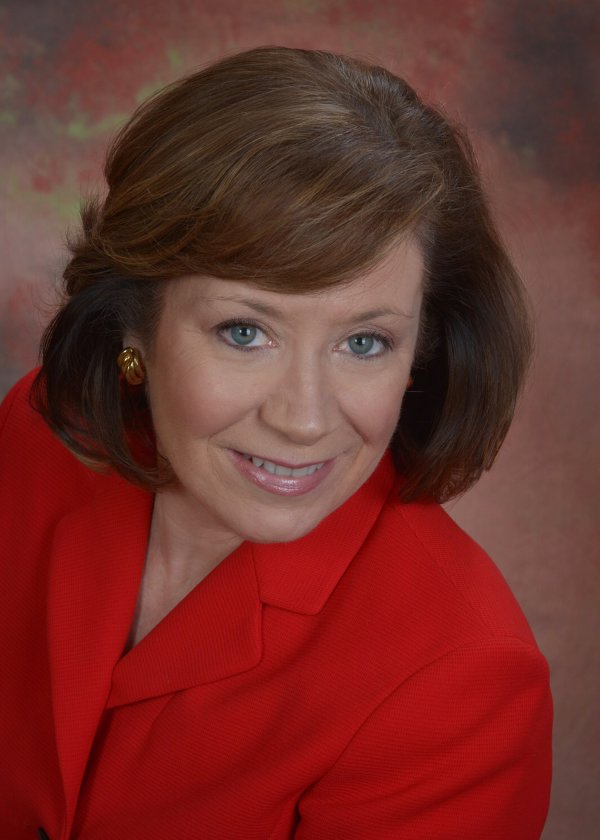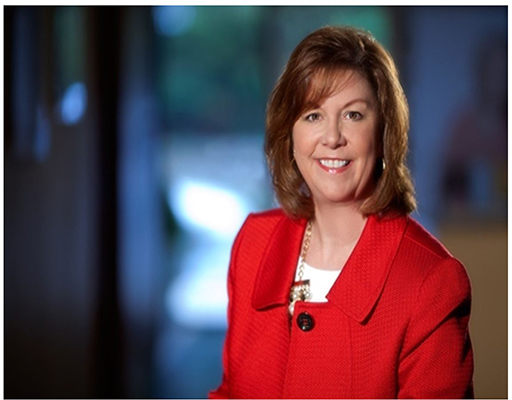 Every week as SmallBizLady, I conduct interviews with experts on my Twitter talk show #SmallBizChat. The show takes place every Wednesday on Twitter from 8-9 pm ET. This is excerpted from my recent interview with Jaime Nacach. He has an extensive background in multiple fields and knows what it takes to take a business forward. He owns a marketing agency, Bloominari, which is on a mission to provide reasonably-priced marketing and design services to small and medium-sized growing businesses throughout the U.S. and Mexico. For more information, visit: http://bloominari.com/
Every week as SmallBizLady, I conduct interviews with experts on my Twitter talk show #SmallBizChat. The show takes place every Wednesday on Twitter from 8-9 pm ET. This is excerpted from my recent interview with Jaime Nacach. He has an extensive background in multiple fields and knows what it takes to take a business forward. He owns a marketing agency, Bloominari, which is on a mission to provide reasonably-priced marketing and design services to small and medium-sized growing businesses throughout the U.S. and Mexico. For more information, visit: http://bloominari.com/
SmallBizLady: WHAT’S THE MOST COST EFFECTIVE WAY FOR A SMALL BUSINESS TO GENERATE LEADS, BRAND AWARENESS AND POTENTIAL CLIENTS IN TODAY’S DIGITAL WORLD?
Jaime Nacach: To develop Facebook advertising campaigns, taking advantage of its huge user base, hyper targeting capabilities, tracking, and reporting. Facebook has access and incredibly detailed information about its almost 1.7 billion users worldwide.
This is something that has never happened before, where a single company is able to figure out what you like, how you behave, what photos you enjoy, what content you comment on, and which events, ads, links, and content you click on. Facebook builds a “digital persona” of who you are, so that advertisers have advanced tools to target their specific audience.
Sometimes, when you advertise on Facebook you don’t want people to do anything except remember who you are. That’s brand awareness. For example, if Coke were to run an ad campaign on Facebook, they would not want the goal of the campaign to be for you to buy coke online. Instead, they just want to make sure you keep seeing and learning about Coke as much as possible, so that when you’re at a store, you buy Coke.
Why is Facebook cost effective? Because 1) It’s more affordable than most Google Pay-Per-Click (PPC) campaigns (those are too highly competitive) and 2) in many ways it can better help advertisers to target their exact audience, better than Google keywords-based Ads can.
SmallBizLady: HOW MUCH WILL IT COST ME TO GENERATE LEADS ON FACEBOOK?
Jaime Nacach: Whatever you’d like to invest, starting at $1, up to thousands. There are two main costs:
1) Developing the strategy and content for the ads, and
2) Paying to show the ads.
Point number 1 can be developed by either an individual (the Facebook small business trying to promote a company), or a professional freelancer who specializes on Facebook, or a marketing ad agency such as Bloominari. In the case of an agency, they should have a team of various members who work on a campaign. This includes a team of a Facebook marketing strategist, a content writer, and a graphic designer.
For part number 2, the cost of the ads, all you’ve got to do is give Facebook your credit card, say how much you want to spend/invest per day, and they’ll charge your card automatically. That’s the easiest part.
SmallBizLady: How can I capture new business leads using Facebook in THREE easy steps?
Jaime Nacach: In three short steps, this is what it takes to run a successful lead campaign on Facebook:
1) Create a Facebook advertisement campaign (or boost a post)
2) Send users to a landing page, where you can collect at least their e-mail address
3) Create an E-mail system to automatically reply to your users upon filling out the form.
SmallBizLady: WHAT’S THE SECRET TO A SUCCESSFUL LEAD GENERATION CAMPAIGN ON FACEBOOK?
Jaime Nacach: The most important piece of the puzzle, is defining the right target audience. Identifying the best possible group of users who match the behaviors, interest, needs and demographics of your ideal clients. More than half of your success will be based on this.
SmallBizLady: WHAT METHODS DOES FACEBOOK OFFER TO RUN ADS. WHERE DO THEY SHOW UP? CAN I CHOOSE WHERE TO PLACE THEM, HOW DOES IT ALL WORK?
Jaime Nacach: Facebook lets you view your posts/ads on Facebook’s desktop or mobile platform, or on Instagram. It also offers an ad network to reach an even larger audience. Ads mostly show up on your Facebook news feed, Instagram photo feed, or the “right column” on Facebook’s desktop version.
SmallBizLady: WHAT THINGS SHOULD I PREPARE PRIOR TO STARTING A FACEBOOK ADVERTISING CAMPAIGN?
Jaime Nacach: Brainstorm and write down at least three groups of potential types of potential clients you’d like to target, and define as many characteristics for each one (demographics, behavior, what they like, what they don’t like, where they hang out, how old they are, what they studied, etc).
Then, spend some time writing the content for the ads (A headline, sub-headline and the main “Text content” that goes above your graphic). You must then design a graphic to go along with your ad. The graphic must be 1200 x 628 pixels (or smaller, but the same proportion).
SmallBizLady: WHAT TYPE OF PEOPLE CAN I TARGET THROUGH FACEBOOK? WHAT TARGETING METHODS DOES FACEBOOK OFFER? HOW MANY PEOPLE CAN I REACH?
Jaime Nacach: You can target practically anyone on the planet who uses Facebook. With over a billion users, and tons of daily data about what everyone likes, what they comment on and what they do on Facebook. Facebook has a super-detailed idea of who each of us is.
When creating a target audience on Facebook (which defines who will see your ads), you can choose your audience based on these three broad categories:
1) Demographics (Age, Sex, Location, etc.)
2) Behaviors (How you use and act on Facebook and other ads) and
3) Interests (What you like, pages you follow, artist you’re a fan of, etc.).
You can reach pretty much anyone and everyone on Facebook if you’re budget is big enough.
SmallBizLady: DOES FACEBOOK PROVIDE EVERYTHING I NEED TO CREATE A LEAD GENERATION CAMPAIGN, OR DO I NEED ADDITIONAL TOOLS OR SOFTWARE?
Jaime Nacach: – Everything for setting up the Facebook ad campaign can be done using Facebook’s free advertising tools. You do need additional tools if you want to run a complete and professional ad campaign. This includes the use of a photo editing software for designing graphics, and a landing page or website to send your ad traffic to once they click the ad.
Now Facebook also offers “Lead Ads”, which let people create mini-landing pages right on Facebook. In this case, you don’t need a landing page, nor a way to capture a lead’s information.
SmallBizLady: WHAT ARE THE MOST POPULAR WAYS TO ENTICE MY FACEBOOK TARGET AUDIENCE TO CLICK ON MY ADS?
Jaime Nacach: In short, offer them something that’s valuable to them. When people get something from you for free, they love it and they’ll click your ad and exchange their contact info to receive your offer. Popular incentives could include:
E-book or whitepaper
Discount coupon/voucher
Contest entry
Free trial
Free consultation for professional services
A physical gift
Notification of a future product launch
Webinar registration
SmallBizLady: WHAT’S THE MOST COMMON ISSUE THAT CAUSES FACEBOOK AD CAMPAIGNS TO BE UNSUCCESSFUL?
Jaime Nacach: When the marketer thinks that the Facebook ads are good enough on their own. That’s the biggest mistake. The ads are just the starting point.
You must also have a well thought-out landing page with a valuable offer or valuable information, something to entice people to click your Call-to-action (CTA) button. Such as “Learn More”, “Download Now”, etc.
You must invest in great copy for your ad’s text, as well as a super attention grabbing graphic. This is just half way through success.
The second part of the battle is to convert the lead into a customer, but that’s a whole other topic. For that I recommend using marketing automation tools to help you do this quickly and efficiently.
SmallBizLady: IS THERE A WAY TO AUTOMATE THE ENTIRE LEAD GENERATION PROCESS, IF YES WHAT’S THE EASIEST WAY TO DO IT?
Jaime Nacach: Yes.
You need:
1) A lead capturing form
2) A customer relationship management system (CRM)
3) E-mail marketing software
4) A way to sync everything together
Once you capture a lead, with a tool such as MailChimp’s newsletter sign-up form, you then want to create a contact on your CRM (for sales follow up), and you must then create an automatic e-mail campaign to constantly send out e-mails on your behalf.
We use a more complex, but easy to use system we’d love to share and talk about on another interview.
SmallBizLady: WHO CAN HELP ME CREATE EVERYTHING I NEED TO PREPARE A WELL-PLANNED, STRATEGIC FACEBOOK ADVERTISING AND MARKETING PLAN?
Jaime Nacach: If you want to spend the time to do everything yourself, you technically can. If you would rather get help in some areas, here’s who you need:
1) A marketing strategist to define your target audience, do research about your company, your ideal client, etc.
2) A content writer to write attractive copy/text for your ads
3) A graphic designer to create super nice graphics, and
4) A computer/technology savvy person to setup the actual Facebook ad campaign.
You can get an expert, or you can read everything there is to do on Facebook’s help pages.
P.S. From experience, I can just tell you that it’s probably best you hire someone with experience, you may be overwhelmed as to how much you’ll need to do.
If you found this interview helpful, join us on Wednesdays 8-9 pm ET; follow @SmallBizChat on Twitter. Here’s how to participate in #SmallBizChat: http://bit.ly/1hZeIlz For more tips on how to start or grow your small business subscribe to Melinda Emerson’s blog http://www.succeedasyourownboss.com.
The post How to Capture Leads from Facebook for Your Small Business appeared first on Succeed As Your Own Boss.
 Every week as SmallBizLady, I conduct interviews with experts on my Twitter talk show #SmallBizChat. The show takes place every Wednesday on Twitter from 8-9 pm ET. This is excerpted from my recent interview with Barry Moltz. Barry has discovered the formula to get stuck business owners unstuck and marching forward. Barry’s fifth book “
Every week as SmallBizLady, I conduct interviews with experts on my Twitter talk show #SmallBizChat. The show takes place every Wednesday on Twitter from 8-9 pm ET. This is excerpted from my recent interview with Barry Moltz. Barry has discovered the formula to get stuck business owners unstuck and marching forward. Barry’s fifth book “ Every week as SmallBizLady, I conduct interviews with experts on my Twitter talk show #SmallBizChat. The show takes place every Wednesday on Twitter from 8-9 pm ET. This is excerpted from my recent interview with Che Brown. Che is the master of neuro-linguistic sales and writing copy that hypnotizes the reader and moves them to action. He has coached entrepreneurs to sales of over $400 million. He eats, sleeps, and lives sales. As the Sales Cardiologist, Che knows sales is the life-blood of any company and helps build 7-figure sales teams for small business owners. For more information, visit:
Every week as SmallBizLady, I conduct interviews with experts on my Twitter talk show #SmallBizChat. The show takes place every Wednesday on Twitter from 8-9 pm ET. This is excerpted from my recent interview with Che Brown. Che is the master of neuro-linguistic sales and writing copy that hypnotizes the reader and moves them to action. He has coached entrepreneurs to sales of over $400 million. He eats, sleeps, and lives sales. As the Sales Cardiologist, Che knows sales is the life-blood of any company and helps build 7-figure sales teams for small business owners. For more information, visit:  Every week as SmallBizLady, I conduct interviews with experts on my Twitter talk show #SmallBizChat. The show takes place every Wednesday on Twitter from 8-9 pm ET. This is excerpted from my recent interview with A. Fitzgerald Hardnett. He is a forward-thinking game changer and a sought after strategic marketing consultant for service professionals and brick & mortar small businesses. He believes visibility & lead generation are keys to success. Fitzgerald creates customized programs that deliver breakthroughs in visibility, and position you as the local expert & recognized authority in your field. For more information visit:
Every week as SmallBizLady, I conduct interviews with experts on my Twitter talk show #SmallBizChat. The show takes place every Wednesday on Twitter from 8-9 pm ET. This is excerpted from my recent interview with A. Fitzgerald Hardnett. He is a forward-thinking game changer and a sought after strategic marketing consultant for service professionals and brick & mortar small businesses. He believes visibility & lead generation are keys to success. Fitzgerald creates customized programs that deliver breakthroughs in visibility, and position you as the local expert & recognized authority in your field. For more information visit:  Every week as SmallBizLady, I conduct interviews with experts on my Twitter talk show #SmallBizChat. The show takes place every Wednesday on Twitter from 8-9 pm ET. This is excerpted from my recent interview with Cathy Larkin. Founder of Web Savvy PR, Cathy add social media tools to the traditional Public Relations toolkit to help small businesses and entrepreneurs; non-profits and speakers; bloggers and authors build their businesses, and expand the reach of their brands. She excels in explaining geeky things in a non-geeky, easy-to-understand way. For more information, visit:
Every week as SmallBizLady, I conduct interviews with experts on my Twitter talk show #SmallBizChat. The show takes place every Wednesday on Twitter from 8-9 pm ET. This is excerpted from my recent interview with Cathy Larkin. Founder of Web Savvy PR, Cathy add social media tools to the traditional Public Relations toolkit to help small businesses and entrepreneurs; non-profits and speakers; bloggers and authors build their businesses, and expand the reach of their brands. She excels in explaining geeky things in a non-geeky, easy-to-understand way. For more information, visit:  Every week as SmallBizLady, I conduct interviews with experts on my Twitter talk show #SmallBizChat. The show takes place every Wednesday on Twitter from 8-9 pm ET. This is excerpted from my recent interview with Jennifer Abernethy. Jennifer is America’s Sales and Social Marketing Stylist. After serving as an award winning executive with The Washington Post Company, Jennifer continued with a successful career in technology sales. In 2006, she joined the entrepreneur world and founded The Sales LoungeÔ. She is the author of the now ever-popular Complete Idiot’s Guide to Social Media Marketing. For more information, visit:
Every week as SmallBizLady, I conduct interviews with experts on my Twitter talk show #SmallBizChat. The show takes place every Wednesday on Twitter from 8-9 pm ET. This is excerpted from my recent interview with Jennifer Abernethy. Jennifer is America’s Sales and Social Marketing Stylist. After serving as an award winning executive with The Washington Post Company, Jennifer continued with a successful career in technology sales. In 2006, she joined the entrepreneur world and founded The Sales LoungeÔ. She is the author of the now ever-popular Complete Idiot’s Guide to Social Media Marketing. For more information, visit:  Every week as SmallBizLady, I conduct interviews with experts on my Twitter talk show #SmallBizChat. The show takes place every Wednesday on Twitter from 8-9 pm ET. This is excerpted from my recent interview with Yakinea Marie. Yakinea Marie, a certified business coach and Wealth Strategist™, is the Founder and CEO of the I Am Woman Network™, LLC, a business development and training company for women entrepreneurs. For more information, visit:
Every week as SmallBizLady, I conduct interviews with experts on my Twitter talk show #SmallBizChat. The show takes place every Wednesday on Twitter from 8-9 pm ET. This is excerpted from my recent interview with Yakinea Marie. Yakinea Marie, a certified business coach and Wealth Strategist™, is the Founder and CEO of the I Am Woman Network™, LLC, a business development and training company for women entrepreneurs. For more information, visit:  Every week as SmallBizLady, I conduct interviews with experts on my Twitter talk show #SmallBizChat. The show takes place every Wednesday on Twitter from 8-9 pm ET. This is excerpted from my recent interview with Shawn Finder Shawn Finder is the Co-Founder and CEO of ExchangeLeads. Founded in 2014, ExchangeLeads is an automated software that helps small businesses identify new prospects to fill their sales funnel. Shawn is the author of
Every week as SmallBizLady, I conduct interviews with experts on my Twitter talk show #SmallBizChat. The show takes place every Wednesday on Twitter from 8-9 pm ET. This is excerpted from my recent interview with Shawn Finder Shawn Finder is the Co-Founder and CEO of ExchangeLeads. Founded in 2014, ExchangeLeads is an automated software that helps small businesses identify new prospects to fill their sales funnel. Shawn is the author of  Every week as SmallBizLady, I conduct interviews with experts on my Twitter talk show #SmallBizChat. The show takes place every Wednesday on Twitter from 8-9 pm ET. This is excerpted from my recent interview with Gene Marks. Gene Marks is a columnist, author, and small business owner. Gene writes every day on business, politics, and public policy for the Washington Post and weekly for Forbes, Fortune, Fox Business, Inc. Magazine, Entrepreneur and the Huffington Post. Gene owns and operates the Marks Group PC, a highly successful firm that provides technology and consulting services to small and medium business. For more information, visit:
Every week as SmallBizLady, I conduct interviews with experts on my Twitter talk show #SmallBizChat. The show takes place every Wednesday on Twitter from 8-9 pm ET. This is excerpted from my recent interview with Gene Marks. Gene Marks is a columnist, author, and small business owner. Gene writes every day on business, politics, and public policy for the Washington Post and weekly for Forbes, Fortune, Fox Business, Inc. Magazine, Entrepreneur and the Huffington Post. Gene owns and operates the Marks Group PC, a highly successful firm that provides technology and consulting services to small and medium business. For more information, visit:  Every week as SmallBizLady, I conduct interviews with experts on my Twitter talk show #SmallBizChat. The show takes place every Wednesday on Twitter from 8-9 pm ET. This is excerpted from my recent interview with Christian Karasiewicz. Christian is the CEO and Founder of Social Chefs (
Every week as SmallBizLady, I conduct interviews with experts on my Twitter talk show #SmallBizChat. The show takes place every Wednesday on Twitter from 8-9 pm ET. This is excerpted from my recent interview with Christian Karasiewicz. Christian is the CEO and Founder of Social Chefs ( Every week as SmallBizLady, I conduct interviews with experts on my Twitter talk show #SmallBizChat. The show takes place every Wednesday on Twitter from 8-9 pm ET. This is excerpted from my recent interview with James Muir. James is the author of The Perfect Close: The Secret to Closing Sales – The Best Selling Practices & Techniques for Closing the Deal that shows sales and service professionals a clear and simple approach that increases closed opportunities and accelerates sales to the highest levels while remaining genuinely authentic. Combining the latest industry drivers with the most recent ideas and best practices James helps sales and services organizations take sales performance to a higher level while remaining genuine and authentic to their value system. For more information, visit:
Every week as SmallBizLady, I conduct interviews with experts on my Twitter talk show #SmallBizChat. The show takes place every Wednesday on Twitter from 8-9 pm ET. This is excerpted from my recent interview with James Muir. James is the author of The Perfect Close: The Secret to Closing Sales – The Best Selling Practices & Techniques for Closing the Deal that shows sales and service professionals a clear and simple approach that increases closed opportunities and accelerates sales to the highest levels while remaining genuinely authentic. Combining the latest industry drivers with the most recent ideas and best practices James helps sales and services organizations take sales performance to a higher level while remaining genuine and authentic to their value system. For more information, visit:  Every week as SmallBizLady, I conduct interviews with experts on my Twitter talk show #SmallBizChat. The show takes place every Wednesday on Twitter from 8-9 pm ET. This is excerpted from my recent interview with Dawn Fotopulos. Dawn is an Associate Professor of Business at The King’s College in NYC, the award-winning author of Accounting for the Numberphobic; A Survival Guide for Small Business Owners, which won Best Business Book of 2015, and distinguished professor in the Woodard Institute for accounting professionals.
Every week as SmallBizLady, I conduct interviews with experts on my Twitter talk show #SmallBizChat. The show takes place every Wednesday on Twitter from 8-9 pm ET. This is excerpted from my recent interview with Dawn Fotopulos. Dawn is an Associate Professor of Business at The King’s College in NYC, the award-winning author of Accounting for the Numberphobic; A Survival Guide for Small Business Owners, which won Best Business Book of 2015, and distinguished professor in the Woodard Institute for accounting professionals.
 Every week as SmallBizLady, I conduct interviews with experts on my Twitter talk show #SmallBizChat. The show takes place every Wednesday on Twitter from 8-9 pm ET. This is excerpted from my recent interview with Marci Hill. Marcie Hill, M.S., is a freelance writer, blogger, author, and speaker who left her job and 12-year career in human resources to pursue her dream of writing. Her written successes can be found in international, national, and local print and online publications. She has written over 3,000 blog posts; self-published seven books; and presented at national and local blogging and social media conferences. For more information, visit:
Every week as SmallBizLady, I conduct interviews with experts on my Twitter talk show #SmallBizChat. The show takes place every Wednesday on Twitter from 8-9 pm ET. This is excerpted from my recent interview with Marci Hill. Marcie Hill, M.S., is a freelance writer, blogger, author, and speaker who left her job and 12-year career in human resources to pursue her dream of writing. Her written successes can be found in international, national, and local print and online publications. She has written over 3,000 blog posts; self-published seven books; and presented at national and local blogging and social media conferences. For more information, visit:  Every week as SmallBizLady, I conduct interviews with experts on my Twitter talk show #SmallBizChat. The show takes place every Wednesday on Twitter from 8-9 pm ET. This is excerpted from my recent interview with Roshell Rinkins. Roshell is a supply chain expert, and has leveraged her 10+ year experience in the consumer products industry to create a virtual beauty destination to serve the lifestyle of time deprived women on-the-go. For more information, visit:
Every week as SmallBizLady, I conduct interviews with experts on my Twitter talk show #SmallBizChat. The show takes place every Wednesday on Twitter from 8-9 pm ET. This is excerpted from my recent interview with Roshell Rinkins. Roshell is a supply chain expert, and has leveraged her 10+ year experience in the consumer products industry to create a virtual beauty destination to serve the lifestyle of time deprived women on-the-go. For more information, visit:  Every week as SmallBizLady, I conduct interviews with experts on my Twitter talk show #SmallBizChat. The show takes place every Wednesday on Twitter from 8-9 pm ET. This is excerpted from my recent interview with Suzanne Paling of Sales Management Services has over 25 years of experience in sales management consulting and coaching, helping companies in all industries improve their sales performance and processes. For more information, visit:
Every week as SmallBizLady, I conduct interviews with experts on my Twitter talk show #SmallBizChat. The show takes place every Wednesday on Twitter from 8-9 pm ET. This is excerpted from my recent interview with Suzanne Paling of Sales Management Services has over 25 years of experience in sales management consulting and coaching, helping companies in all industries improve their sales performance and processes. For more information, visit:  Every week as SmallBizLady, I conduct interviews with experts on my Twitter talk show #SmallBizChat. The show takes place every Wednesday on Twitter from 8-9 pm ET. This is excerpted from my recent interview with Andrena Sawyer. Andrena is an entrepreneur, author and consultant committed to helping women entrepreneurs succeed. She is the president of P.E.R.K. Consulting, a small business consulting firm in the Washington D.C. area. For more information, visit:
Every week as SmallBizLady, I conduct interviews with experts on my Twitter talk show #SmallBizChat. The show takes place every Wednesday on Twitter from 8-9 pm ET. This is excerpted from my recent interview with Andrena Sawyer. Andrena is an entrepreneur, author and consultant committed to helping women entrepreneurs succeed. She is the president of P.E.R.K. Consulting, a small business consulting firm in the Washington D.C. area. For more information, visit:  Every week as SmallBizLady, I conduct interviews with experts on my Twitter talk show #SmallBizChat. The show takes place every Wednesday on Twitter from 8-9 pm ET. This is excerpted from my recent interview with Mikael Lauharanta. Mikael is a digital media authority and one of the founding fathers of employee advocacy. As the co-founder and COO of Smarp, he has helped foster the expansion of the company from the founding team to a global organization with 60+ employees and offices all over the world. For more information, visit:
Every week as SmallBizLady, I conduct interviews with experts on my Twitter talk show #SmallBizChat. The show takes place every Wednesday on Twitter from 8-9 pm ET. This is excerpted from my recent interview with Mikael Lauharanta. Mikael is a digital media authority and one of the founding fathers of employee advocacy. As the co-founder and COO of Smarp, he has helped foster the expansion of the company from the founding team to a global organization with 60+ employees and offices all over the world. For more information, visit:  Every week as SmallBizLady, I conduct interviews with experts on my Twitter talk show #SmallBizChat. The show takes place every Wednesday on Twitter from 8-9 pm ET. This is excerpted from my recent interview with Chris Sentz. Chris is a digital solutions leader with an extensive background in the development and implementation of customer-facing growth initiatives including marketing, interactive communications, and market development. For more information, visit:
Every week as SmallBizLady, I conduct interviews with experts on my Twitter talk show #SmallBizChat. The show takes place every Wednesday on Twitter from 8-9 pm ET. This is excerpted from my recent interview with Chris Sentz. Chris is a digital solutions leader with an extensive background in the development and implementation of customer-facing growth initiatives including marketing, interactive communications, and market development. For more information, visit:  Every week as SmallBizLady, I conduct interviews with experts on my Twitter talk show #SmallBizChat. The show takes place every Wednesday on Twitter from 8-9 pm ET. This is excerpted from my recent interview with Barb Giamanco heads up Social Centered Selling. She’s the co-author of The New Handshake: Sales Meets Social Media and authored the Harvard Business Review article Tweet Me, Friend Me, Make Me Buy. As a small business owner herself, Barb has spent the last 14 years implementing unique marketing approaches to drive revenue results. For more information, visit:
Every week as SmallBizLady, I conduct interviews with experts on my Twitter talk show #SmallBizChat. The show takes place every Wednesday on Twitter from 8-9 pm ET. This is excerpted from my recent interview with Barb Giamanco heads up Social Centered Selling. She’s the co-author of The New Handshake: Sales Meets Social Media and authored the Harvard Business Review article Tweet Me, Friend Me, Make Me Buy. As a small business owner herself, Barb has spent the last 14 years implementing unique marketing approaches to drive revenue results. For more information, visit: 







